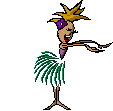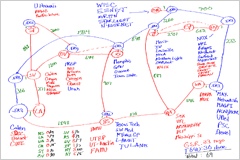

 The basic function of TWiki is a Wiki (if that helps!)
A Wiki is like a web site, except that you can edit the content in your browser
The basic function of TWiki is a Wiki (if that helps!)
A Wiki is like a web site, except that you can edit the content in your browser
 , via Ward Cunningham
, via Ward Cunningham
 TWiki implements the basic Wiki idea of a shared whiteboard
TWiki implements the basic Wiki idea of a shared whiteboard

 |  |
| r6 < r5 < r4 |
|  |

| MyCo.MyTopic |
Webs: Myco | Main | TWiki | Sandbox |
| Changes | Index | Search | Go | ||

| MyCo.MyTopic |
Webs: Myco | Main | TWiki | Sandbox |
| Changes | Index | Search | Go | ||
| Edit | Attach | Diffs | r2 > r1 | More | |
| Revision r1.2 - 13 Feb 2004 - 09:09 GMT - TWikiPresenter |
Copyright © 1999-2024 by the contributing authors. All material on this collaboration platform is the property of the contributing authors. Ideas, requests, problems regarding Daya Bay? Send feedback Note: Please contribute updates to this topic on TWiki.org at TWiki:TWiki.ATasteOfTWiki. |
the world is an OblateSpheroid
_Everyone_ *knows* that =the world= is an OblateSpheroid Actually it is perfectly and absolutely flat_Actually_ it is *perfectly* and __absolutely__ flat| You type | You see |
|---|---|
---++ And so is this | And so is this |
---+ This is a heading | This is a heading |
like this | You type | You see |
|---|---|
* Bullet * Sub-bullet |
|
1
| Cat | Feline |
| Bear | Ursine |
| Wolf | Lupine |
| Cat | Feline |
| Bear | Ursine |
| Wolf | Lupine |
[[BumpyWords][bumpy words]] appears as bumpy words
[[http://www.google.com/][Google]] appears as Google
<nop> <nop>_word_ appears as _word_
Attachment  |
Action | Size | Date | Who | Comment |
|---|---|---|---|---|---|
|
|
manage | 9.6 K | 13 Feb 2004 - 18:41 | MushroomMagicMan | Attached image file |
%ATTACHURL%/myco.gif to see this: 

%SEARCH{"CategoryWeather" nosearch="on" nosummary="on"}%
%CALENDAR...%
%COMMENT...
%CHART...
%EDITTABLE...
%RENDERLIST...
%SLIDESHOWSTART...
%CALC...
%TABLE...
%DRAWING...
 , one of the companies in the Oxford Gene Technology
, one of the companies in the Oxford Gene Technology group.
group.
|
Copyright © 1999-2024 by the contributing authors. All material on this collaboration platform is the property of the contributing authors.
Ideas, requests, problems regarding Daya Bay? Send feedback Note: Please contribute updates to this topic on TWiki.org at TWiki:TWiki.ATasteOfTWiki. |